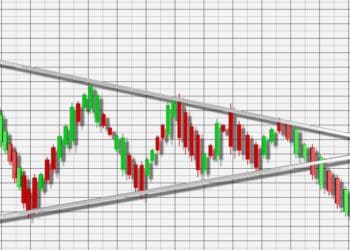If you are trading in the market, you’ll know that uncertainty and risk lurk at every step. In such a mercurial environment, having a way to develop an insight into how the market will perform can get you one step ahead. Learn about technical analysis and why it could be relevant for you.
What is technical analysis in the market?
Simply speaking, technical analysis is studying the movement of prices to define repeating patterns. It is a way of learning from past mistakes and understanding which market actions give rise to profitable scenarios. Technical analysis can help traders observe trends and plan their actions or strategy accordingly by utilizing various tools and indicators. It gives you an insight into the trades as to what causes the market to move up, down, or even sideways.
Why do traders use technical analysis?
You can use technical analysis tools for planning and building efficient strategies for your trades. Some of the benefits of technical analysis are listed below.
- Decision-making. The technical analysis opens up the market that you can’t get at face value for you, leading to better and more profitable decision-making. By developing a more in-depth understanding of the market environment, it makes drawing expectations easier, enabling traders to ride favorable trends and pull out of the market when things are expected to get sour.
- Developing trading strategies. Rather than winging your trades based on other peoples’ strategies or unreliable intuition, technical analysis can actually help you develop a sound trading strategy based on a solid foundation. Elaborate technical analysis over time can help you figure out what works best for you and form your trading style.
- Forecasting price action. Tools for technical analysis can also enable traders to analyze past and current trends to develop accurate forecasts about the expected price action. Understanding the strength of a price trend becomes important when analyzing the market to make effective decisions. Moreover, foreseeing the direction and potential of a future change is also crucial to comprehend the current and future price. Technical analysis gives an insight into trend reversals and enables traders to proceed with caution.
- Risk management. Technical analysis can predict price reversals, show trading volumes, supply and demand, and many other important things. Finally, technical analysis allows you to determine market volatility and trading volumes, hence, extending your risk management tools arsenal.
Popular tools of technical analysis
Technical analysis tools used for trading include indicators, levels, and charts. Although these things are inseparable in the daily trading practice, we will look at each of them in isolation to provide an insight into each of their types and explain what makes some types of them particularly popular among traders.
Indicators
Technical analysis indicators are algorithms that allow you to obtain data on future prices using data on quotes for a certain period of time. They appeared a long time ago, and many of them were used even before general computerization. For example, the notorious Ichimoku was developed in Japan in the 30s of the twentieth century. The indicator computations were carried out exclusively by hand.
With the advent of computers and large-scale computerization, indicators gradually migrated to computers. Now all calculations are carried out automatically. The trader receives only the result, which he or she applies in practice. The result you get from most indicators (namely, most, but not all) is the signal for action – buying or selling an asset.
There are three main classes of indicators for a trader to work with.
Trend indicators
This class includes trend-following algorithms. The foundation of most trend indicators is the moving average line. Indicators based on it allow you to track the trend and see its beginning, as well as the end, especially when several moving lines (moving lines) are combined.
The most popular trend indicators are Moving Average MA, Bollinger Bands,
Accumulation Swing Index (ASI), Donchian Channels Indicator, and Average Directional Index (ADX), among others.
Oscillators
The second group of indicators is counter-trend or oscillators. They work well in a range of market conditions when there is no pronounced trend. Such indicators are built in a window separate from the chart and are most often presented as a curve or curves that fluctuate within a certain range.
The most famous oscillators are the Stochastic and Relative Strength Index (RSI). Their advantage is that they allow you to see in advance when the price can make a reversal and move from one trend to another. Additionally, they very often give you several types of signals.
Bill Williams’s Indicators
Among the tech analysis indicators, Bill Williams’s indicators are often distinguished as a separate group. The legendary trader and analyst renowned for his innovations in technical analysis and overturning its well-established rules, he introduced quite a few.
These include:
- Acceleration / Deceleration (AD)
- Alligator
- Awesome Oscillator
- Fractals
- Gator (Gator Oscillator)
- Market Facilitation Index (MFI)
Charts
The skill of reading charts allows you to assess the overall trend, as well as to confirm the correctness of the conclusions of fundamental analysis. And the reliability of the selected instrument plays a key role here.
Therefore, let us look at the most popular chart types in trading and compare the information they offer and their pros and cons.
| Type | Data | Pros | Cons |
| Line chart | The line drawn along the time and price axes reflects the quote value that closes the trading period. | Clear visualization. Understanding the general trend. A complete overview of technical analysis figures. | Insufficient datafor decision making. |
| Bar chart | Each bar indicates quote fluctuations within a chosen period, from 5 minutes to a day. | Wide range of available data. Clear visualization of the general trend. | It is nearly impossible to determine the price direction in a narrow time frame. |
| Japanese candles | Open and close prices Min and max quote values | The ability to predict the trend for a short time period. A clear understanding of price movement at a specific period. Availability of complete information. | It is difficult to see figuresdue to the volumetric image. |
Levels
Horizontal lines on a price chart that correspond to a certain price value, while support and resistance lines run at a certain angle, thus being a kind of linear function of price over time.
All technical analysis patterns are based on support and resistance. Any pattern (be it a reversal pattern or a trend continuation pattern) signals its completion with a breakthrough in support/resistance lines.
In 90% of cases, the so-called mutual transformation of levels occurs when support turns into resistance and, conversely, when resistance becomes support. Having broken through the resistance level, the price can roll back in the future, but (if the breakout was true) it will return to growth again. Thus, the level that was resistance previously becomes support.
Traders who did not have time to enter the growing market at the most favorable price (immediately after breaking through the level) begin to make up for the lost time and open long positions on a price pullback.
Final Thoughts
Different indicators work for different market conditions and variables, so it is imperative to learn their uses properly. However, tools of technical analysis are not a universal remedy – it is advisable to research technical indicators thoroughly before relying on them. For a successful trade and to minimize any risks, it is best to use multiple technical indicators in conjunction.







